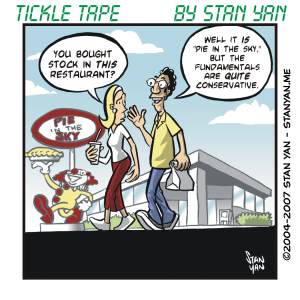Who doesn’t want to be a brilliant trader? There are those elite “Market Wizards” who have a rare talent for making huge profits in a field where few can excel. It’s understandable why anyone would want to succeed in such a field. Wealth, status, and respect are just some of the many possible rewards.
Unfortunately, very few novice traders reach the top of the field. For many, the best they can do is evaluate and accept their abilities, and do their best. Pushing themselves too far and too fast doesn’t work. It leads to frustration, and possibly failure. They must work at their own pace. That’s especially the case when attempting to take on greater levels of risk. Depending on your risk tolerance, taking on greater levels of risk can make you feel uneasy. But if you want to make huge profits as a trader, you eventually need to learn to effortlessly take on greater levels of risk.
Extending your comfort zone isn’t easy. For some people, it is a gradual process. As a first step, novice traders, for example, must learn to put their hard-earned money on the line and accept what it feels like to lose it. At first, taking a loss is disconcerting and a little frightening. Losing a few dollars is easy, but as the amount increases substantially, so does the pressure. Many people crack under the strain. It takes a little practice to learn to risk ever-increasing amounts of money and take it in stride.
There are a few exceptions, though. Some people are natural-born risk-takers. They have no trouble taking a risk and putting their money or ego on the line. But, if you’ve accumulated enough capital to trade actively, in all likelihood, you have learned to manage your money wisely and are careful with it. The idea of taking larger and larger risks to move beyond your comfort zone can be difficult. You may have a natural inclination to protect what you’ve worked so hard to accumulate. It’s tough to not be a little wary of taking bigger and bigger risks.
How do you learn to take on more risk? Again, it depends on your personality and the amount of trading capital in your account. But if you’re like most novice traders, you may need to train yourself to take on greater levels of risk. It’s useful to move up gradually. Many novice traders make the mistake of moving too fast. They feel that they should be able to take greater and greater financial risks quickly and easily, sort of like jumping into a pool of cold water and getting used to the temperature.
For some, this approach may work, but for others, it’s a little too much to expect. It’s more like blacking out from the freezing cold than quickly acclimating. Taking on greater and greater amounts of risk is fear-provoking. If you do it all at once, you move from relatively little fear and anxiety to terrifying amounts of fear and anxiety. It’s too shocking for many. It’s better to work up to it. You wouldn’t try to run a 10-mile marathon tomorrow if you could barely run a mile today.
You would build up your stamina and gradually work up to your objective. It’s wise to do the same thing with trading. Increase the amount you risk gradually. The rate at which you increase it depends on your personality. It’s important to use your own judgement. If you can increase your stake a little each week, then keep up that pace. But if you find that after a month, you’ve surpassed your comfort zone, then reduce your risk. The key is to gradually increase your comfort zone, rather than force yourself to go beyond your limits.
Just because you can’t increase your comfort zone in a matter of days is no reason to be upset or disappointed. Work at your own pace. If you try to do too much, too soon, you’ll just feel overwhelmed and you may never reach your objective. But if you move up gradually, you will increase the likelihood that you will be able to increase the amount of risk you can handle.
Trading is emotional. Taking on greater and greater amounts of risk can be stressful. Rather than become overwhelmed, and possibly undermine your long-term financial goals, it’s useful to take it easy and work at your own pace. You’ll eventually be able to take on greater levels of risk, and trade more calmly, logically, and profitably.


